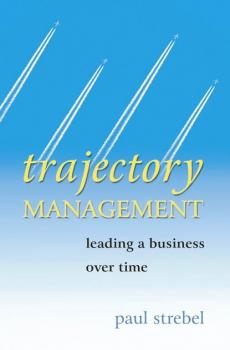Группа авторов
Список книг автора Группа авторовPond Life
Pond Life is a straightforward, no-nonsense guide to improving the way you communicate and interact with other people. Inside you will find a totally original approach to solving many of the most frequently made communication gaffs and blunders. Pond Life will help you boost your confidence and show you how to present yourself in a way you never thought possible. Why Pond Life? Because every time you communicate, you start a ripple effect. Too often we sell ourselves short because we worry about being caught ‘on the hop’, let opportunities slip through our fingers or just plain send out the wrong signals. So come on in, the water’s warm… Discover your personal style Pick up lots of ideas guaranteed to enhance your day-to-day communication skills Stop your audience mentally ‘hopping away’ Discover the power of passion in influencing people around you Dip a toe and give your communication skills a splash of magic. Pond Life will help you to impress your colleagues and friends with simple, easy-to-learn and amusing lessons that you can use again and again to create that all-important ripple effect.
Trajectory Management
Trajectory Management: * moves away from the 'one true way' approach put forward by many business gurus * argues that the search for best practice, best change management, etc. obscures real situations in business * develops principles of right practice for the situation: business is continually evolving and its drivers have to evolve with it. * provides a practical framework and enables diagnosis of where a business trajectory is, and how to sustain or switch trajectories. «Adjusting corporate leadership to different business conditions is key in today's turbulent environment. The systematic review and development of this relationship in Trajectory Management is extremely valuable.» Peter A. Wuffli, President of the Group Executive Board, UBS. «In this book, Paul Strebel goes beyond universal best practice that is presumed to apply no matter what the context. He presents the right practice for managing a business trajectory and winning consistently over time.» Egon P. Zehnder, Founder, Egon Zehnder International, Inc. «Trajectory Management puts context in its rightful place: at the front, middle and end of business planning and execution. Paul Strebel offers a practical framework to simplify the complex and drive better competitive choices for busy decision makers.» John Hofmeister, Director of Human Resources, Shell International B.V. For more on how to use the book see: www.trajectorymanagement.com
Account Management
The sales function is the front-line of any business. Keeping up with the latest sales techniques is essential, as well as ensuring you have a motivated, incentivised and focused sales team well-versed in the basics of selling, from identifying new prospects and getting repeat business to closing the deal. This module gives essential insight into all the key sales drivers such as account management, handling complex sales, selling services, FMCG selling, customer relationships and self-development for sales people.
Inbound Selling
Change the way you think about sales to sell more, and sell better. Over the past decade, Inbound Marketing has changed the way companies earn buyers’ trust and build their brands – through meaningful, helpful content. But with that change comes unprecedented access to information in a few quick keystrokes. Enter the age of the empowered buyer, one who no longer has to rely on a sales rep to research their challenges or learn more about how a company’s offering might fit their needs. Now, with more than 60% of purchasing decisions made in the absence of a sales rep, the role of the rep itself has been called into question. With no end in sight to this trend, sales professionals and the managers who lead them must transform both the way they think about selling and how they go about executing their sales playbook. Expert author and HubSpot Sales Director, Brian Signorelli has viewed the sales paradigm shift from the inside—his unique insights perfectly describe the steps sales professionals must take to meet the needs of the empowered customer. In this book, readers will learn: How inbound sales grew out of inbound marketing concepts and practices A step-by-step approach for sales professionals to become inbound sellers What it really means to be a frontline sales manager who leads a team of inbound sellers The role executive leadership plays in affecting an inbound sales transformation For front-line seller, sales manager, executives, and other sales professionals, Inbound Selling is the complete resource to help your business thrive in the age of the empowered buyer.
Brand Vision
David Taylor's third book lifts the lid on why so many brand visioning projects end in failure: an overly theoretical and complex approach he calls 'strategy tourism'. By contrast, his straightforward, no-nonsense programme will ensure that you end up with an inspiring vision and a hands-on action plan to drive growth. Designed in a highly practical format, brandvision shows how to lead your team on a step-by-step 'visioning journey' that builds engagement, energy and alignment. Powerful tips, tools and tricks help you start applying the principles to your business today: Searching for true insight: creating a springboard for visioning by using different 'insight catalysts' that cover consumers, markets and competition The visioning journey: creating a compelling brand purpose, a big idea and a rallying call; combining product 'sausage' and emotional 'sizzle' Test-driving the vision: bringing the vision to life by exploring it within your business and with consumers Brand-led business: translating the vision into a business building mix that covers 'hero product' innovation, communication and internal engagement Thought-provoking and irreverent, brandvision demonstrates all the dos and don'ts of brand visioning with many stories of success (and screw-ups) including T-Mobile, Dove, Porsche, Absolut and James Bond. It is an invaluable toolkit for anyone interested in rethinking a brand vision – whatever its shape or size.
Alliance Brand
As pressure continues to build on organisations to achieve more with less, partnering offers tremendous promise as a strategic solution. However, up to 70% of such initiatives fail to meet their objectives. In this book, alliance expert Mark Darby argues that, in the age of the extended enterprise, firms must display a positive reputation and hard results from their alliances in order to attract the best partners and stand out from the growing crowd of potential allies. Building on this, he introduces the Alliance Brand concept, explores its critical success factors, and shows in detail how to apply it in your organisation. Darby's straightforward advice and comprehensive maps and tools will guide you on the journey to fulfilling the promise of partnering. The results are higher revenues and reduced alliance failure rates, along with lower costs and fewer risks. Alliance brands also have more satisfied staff and partners, and a transparent, audit-friendly process to satisfy increasing governance concerns. This leads to sustainable alliance success, and ultimately 'partner of choice' status in your chosen industries and markets. That's a compelling return on investment. That's an Alliance Brand.
British Housebuilders
British Housebuilders is the first comprehensive account of the corporate history of the twentieth-century speculative housebuilding industry – the firms that `supplied` those houses and the entrepreneurs who created those firms. The transition from the local housebuilders of the 1930s, through the regional diversification of the 1960s, to the national housebuilders of today is charted via a series of industry league tables. The rationale for the growth in national firms is analysed. The conventional explanation of economies of scale is rejected: instead, the stock market is found to play a key role both in facilitating acquisitions and in demanding growth from its constituent companies. The supply-side analysis also addresses the frequent corporate failures: succession issues, lack of focus and the 1974 and 1990 recessions have played their part in equal measure. British Housebuilders provides the first opportunity to review the evidence drawn from a century of speculative housebuilding; it is only with this historical perspective that sound judgements can be made on the corporate role in housebuilding.
Property Valuation
This book provides a single text for postgraduate study of valuation on real estate courses. After a general introduction to the property market and the economic ideas that underlie valuation, it introduces the theory of valuation as a set of analysis techniques for identifying and understanding market signals in a financial context. The final section of the book, describes the three categories of market players who rely on valuation advice – the developer, investor and occupier. 'all in one' text for postgraduate study of valuation on real estate courses ● sets valuation in its business finance context ● User-friendly and accessible format using tried and tested teaching and learning devices ● Balanced treatment of theory and practice – with extensive use of examples ● Accompanying website with applications: www.blackwellpublishing.com/wyatt
Breakthrough Trading
Leon Wilson has been trading shares for a living for 11 years. He is a firm believer that to succeed in any business it is necessary to always be looking for a better way of doing things. Part of his trading approach is to question conventional wisdom and push the boundaries of accepted technical analysis theory. The contents of this fascinating new book reveal what Wilson believes to be a major breakthrough in technical analysis. He tests the edge that this new charting analysis can offer any serious trader – and the results are astounding. In what he believes to be a world-first, Wilson has succeeded in adapting common and popular indicators (including volume) to price action. Instead of viewing a non-price based indicator such as the relative strength indicator in a separate box at the bottom of the chart, Wilson explains how it can be plotted as a channel on price action – creating the Wilson channel. Moving beyond default settings and combining the channels with various entry and exit strategies, Breakthrough Trading can dramatically improve your yearly returns.
Inbound Content
Develop and implement an effective content strategy tailored to your business’s needs Inbound Content is a step-by-step manual for attracting the right people, turning them into leads, and closing them into customers. Today, everyone knows that content is king. It’s how we engage, how we inform, and how we pass the time; content is everywhere, and if you’re not leveraging its power to promote your business, you’ve already been left behind. Having a website and social media is not enough; if you truly want to take advantage of unprecedented levels of connectedness, you have to create content that draws customers in. It’s not about blindly expanding reach, it’s about reaching out to the right audience. Today’s marketplace is no longer about chasing the sale—with the right approach to content, your customers will come to you. Your content must be valuable, relevant, and consistent—but how should it be implemented at the actual content-creation level? This book shows you how to develop a unified strategy, create compelling content tailored to your needs, and utilize that content to its greatest advantage in order to build your brand. Discover the power of storytelling and generate effective content ideas Plan a long-term content strategy and a content creation framework Create great content, promote it, measure it, and analyze its performance Extend your content’s value, become a more effective writer, and develop a growth mentality Effective content is worth its weight in marketing gold. It stands out from the noise, and to the customer, looks like an oasis in a desert of clickbait and paid reviews. Inbound Content shows you how to plan, build, and implement your content strategy for unprecedented engagement and sales.









